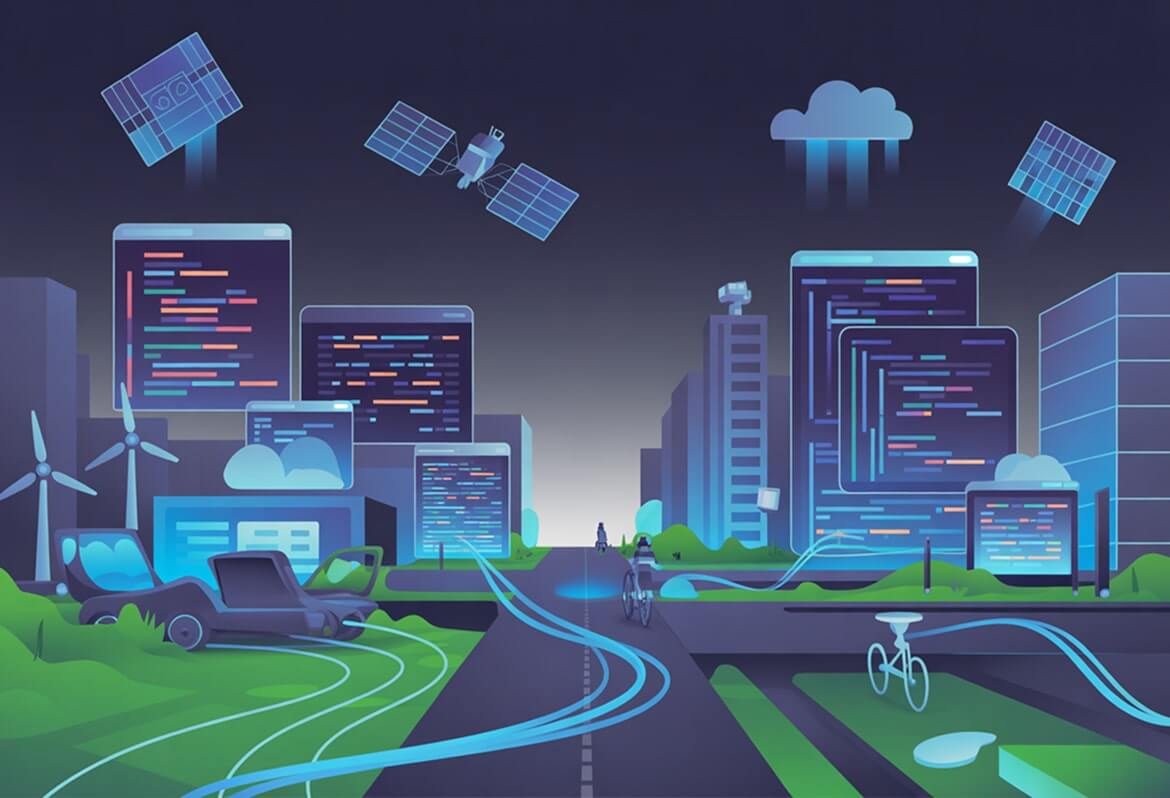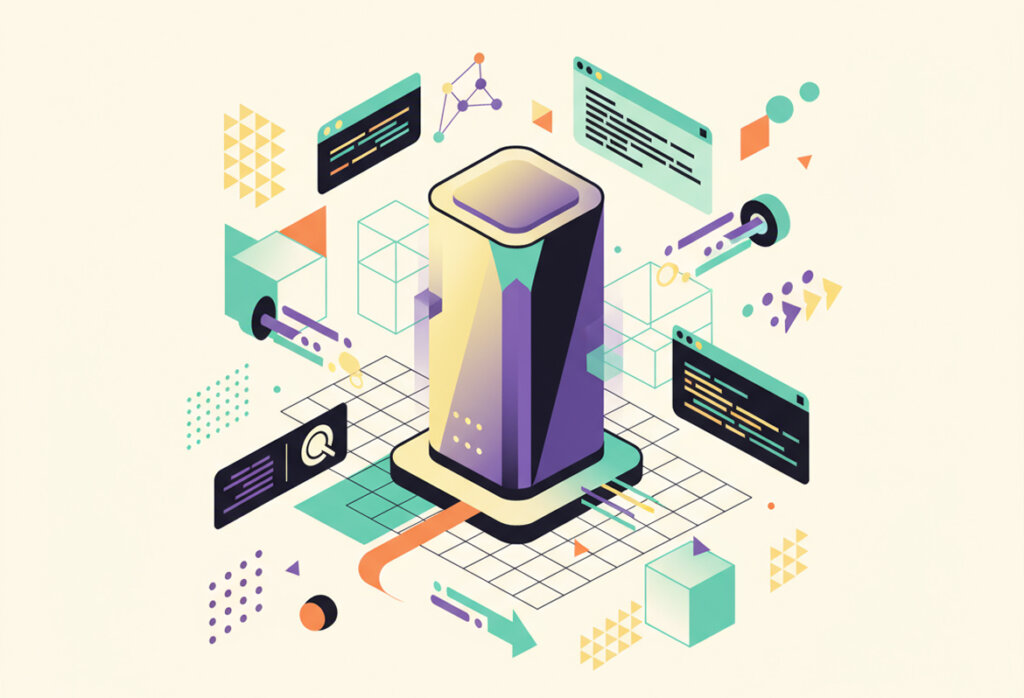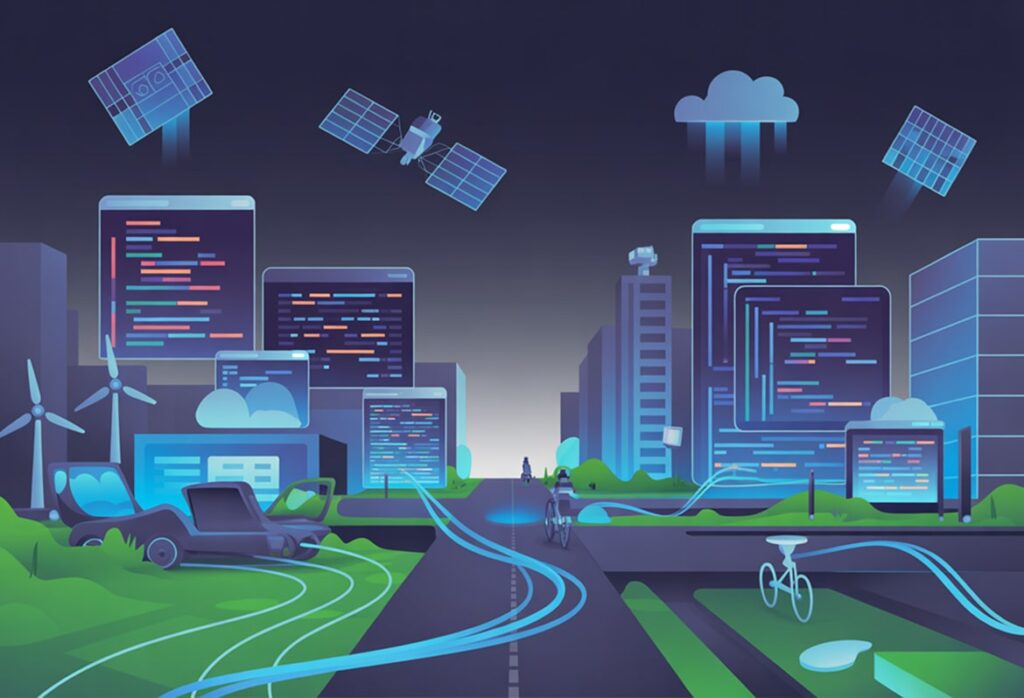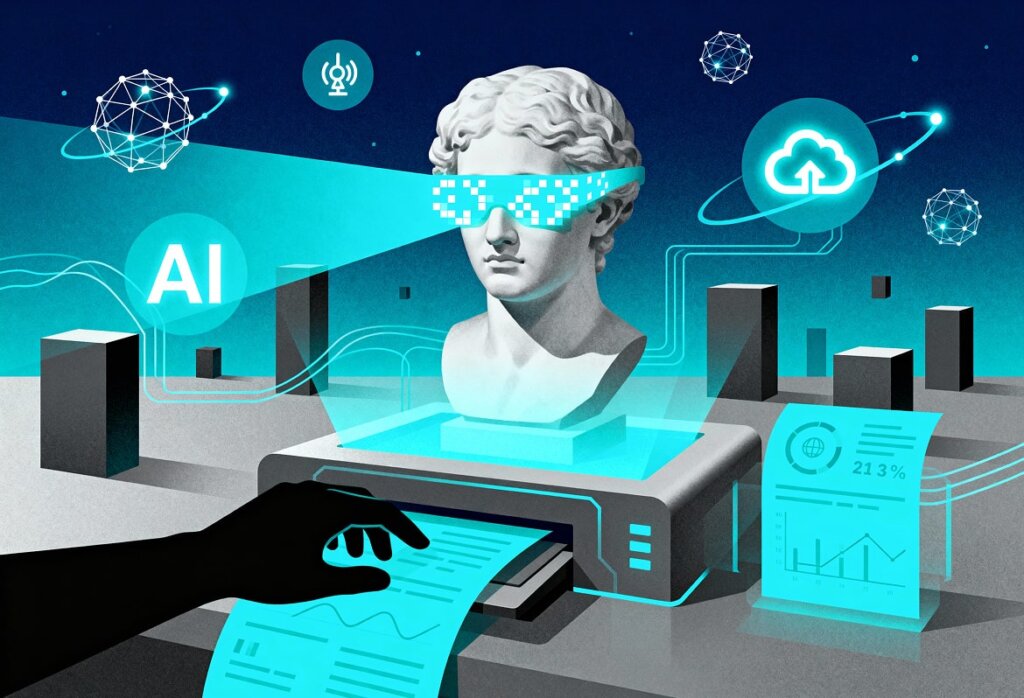Key Highlights
Software is a set of instructions that tells a computer what to do, making modern technology possible.
The main types of software are system software, which runs the computer, and application software, which performs user tasks.
Software development is a structured process that includes designing, coding, testing, and maintaining software applications.
Operating systems act as the crucial bridge between your computer’s hardware and the software you use daily.
From word processors to mobile apps, software is deeply integrated into our business, communication, and entertainment.
Introduction
Have you ever stopped to think about what makes your smartphone, laptop, or even your smart TV work? The answer is software. In the world of modern technology, computer software is the silent engine that powers nearly every device we use. It’s the invisible force that lets you browse the internet, chat with friends, and manage your work. This article will explain the fundamental role of software, breaking down what it is, how it works, and why it’s so critical in today’s digital age.
Understanding Software in Modern Technology
At its core, software is the collection of computer programs and data that provides instructions for a computer’s hardware. Think of hardware as the physical body of a device and software as the brain that directs its actions. Without software, your computer would just be a box of electronic parts.
Understanding the different types of software is key to appreciating how new technologies function. From the operating system that boots up your device to the apps you use for specific tasks, each piece of software has a unique purpose. Let’s explore what software is and how it has evolved.
Definition of Software
What is the definition of software? Simply put, software is a set of instructions that directs a computer to perform specific tasks. These instructions are written by developers in a human-readable format known as source code. This code is then translated into a language the computer can understand, telling the hardware exactly what to do.
A software program is essentially a complete sequence of these instructions designed to accomplish a particular goal. Whether it’s editing a photo, sending an email, or playing a game, a program guides the computer through each step of the process. It’s the variable part of a computer, in contrast to the invariable physical hardware.
This intangible nature is what makes software so versatile. Unlike hardware, which is fixed, a software program can be updated, modified, or replaced to add new features or fix problems, allowing your devices to constantly improve and adapt.
The Evolution of Software Over Time
The history of software is a fascinating journey of rapid evolution. Early software was custom-written for specific, room-sized computers and wasn’t commercially available. The term “software” itself wasn’t even widely used until statistician John Tukey coined it in 1958. This period marked the beginning of a major shift in computing.
In the 1980s, the software evolution accelerated with the arrival of personal computers. Software began to be sold on floppy disks and later on CDs and DVDs, making powerful software solutions accessible to the average consumer. This era saw the launch of iconic applications that defined personal computing.
Today, the distribution of software has changed completely. Most software is purchased and downloaded directly from the internet or accessed through cloud-based subscription models. This allows for instant delivery of new features and updates, ensuring users always have the latest and most secure versions.
The Main Types of Software
When exploring the world of software, you’ll find it’s generally categorized into a few main types. Each category serves a distinct purpose, from managing the computer’s core functions to helping you complete a specific task. Understanding these categories is the first step to grasping how your devices operate.
The primary types of software are system software, application software, and programming software. System software acts as the foundation, application software is what you interact with most directly, and programming software is used to create all other software. Let’s examine each of these in more detail.
System Software Essentials
System software is designed to run and manage a computer’s hardware and provide a platform for applications to run. It operates in the background, handling the essential functions that you often take for granted. Think of it as the backstage crew of a theater production, making sure everything runs smoothly.
The most prominent example of system software is the operating system (OS), like Microsoft Windows or macOS. The OS manages all other programs, coordinates hardware components like your memory and storage devices, and provides a stable environment for other software to function.
Other types of system software include utility software, which helps maintain and configure your computer (like antivirus programs), and device drivers, which allow your computer to communicate with peripherals like printers and keyboards. Without system software, your computer would be unable to perform even the most basic operations.
Application Software and Everyday Use
Application software, often just called an “app,” is a program that performs a specific function for you, the end-user. This is the type of software you interact with most frequently in your daily life. From writing a document to browsing the internet, you’re using application software to get things done.
These programs can be self-contained or part of a larger suite of productivity applications. For example, word processing software is an application specifically designed for creating and editing text documents. Word processors have become essential tools for students, professionals, and home users alike.
Common examples of application software include:
- Web Browsers: Chrome, Firefox, and Safari allow you to access the internet.
- Office Suites: Programs like Microsoft Office provide tools for word processing, spreadsheets, and presentations.
- Graphics Software: Tools like Adobe Photoshop let you create and edit images.
- Communication Platforms: Apps like Slack and Zoom facilitate real-time communication.
Programming Software Explained
Programming software provides the tools that developers and software engineers use to write, test, and debug other software. While most people don’t use this type of software directly, it’s the foundation upon which all other programs are built. It’s the toolbox for the entire software development industry.
These tools support developers by providing environments to write code using various programming languages like Python or Java. They include text editors specifically designed for coding, as well as compilers and interpreters that translate human-readable code into a format the computer can execute.
A software engineer relies on programming software to build everything from operating systems to mobile games. Examples of these tools include compilers, debuggers (for finding and fixing errors), and integrated development environments (IDEs), which bundle multiple development tools into a single application.
How Software Operates on Computers
How does software actually get a computer to do something? All software systems work by providing instructions to the computer hardware. This process, however, is not a direct one. It relies on a layered system where different types of software communicate with each other to produce a result.
At the heart of this operation are the operating systems, which serve as the primary intermediary between the application you are using and the physical hardware. The OS manages everything from memory allocation to data management, ensuring that all components work together harmoniously. We’ll now look closer at how these interactions happen.
The Role of Operating Systems
An operating system (OS) is the most critical piece of system software on any computer. Its main job is to manage all of the computer’s resources, including its memory, processing power, and connected devices. It acts as a translator, converting your commands into instructions the computer hardware can understand and execute.
When you launch an application, the OS is responsible for allocating the necessary memory and processor time for it to run. It also provides a consistent framework that developers can use to create software, so they don’t have to write code for every single hardware variation. This fundamental role ensures a smooth and stable user experience.
Key functions of an operating system include:
- Managing Hardware: It controls all computer hardware, from the CPU to peripherals like printers and webcams.
- Providing a User Interface: It offers a graphical interface (like desktops and icons) so you can easily interact with your computer.
- Running Applications: It provides the platform and resources needed for application software to work properly.
Interaction Between Hardware and Software
The interaction between computer hardware and software is a beautifully choreographed dance. Software provides the instructions, but it’s the hardware that carries them out. When you run a program, the computer’s central processing unit (CPU) reads the software’s instructions from memory.
These instructions, originally written in a high-level programming language, are translated into a low-level language called machine code. Machine code is a series of ones and zeros that the hardware can directly understand and execute. Each instruction tells the CPU to perform a tiny, specific operation, like adding two numbers or moving data.
This process happens millions of times per second. The software also interacts with other hardware components, such as reading data from or writing data to storage devices like a hard drive or SSD. This constant communication between software and hardware is what brings your computer to life.
Common Examples of Software in Daily Life
Software is so integrated into our everyday use that we often don’t even notice it. From the moment you check your phone in the morning to when you stream a movie at night, you are interacting with countless software applications. These programs make our lives more convenient, productive, and entertaining.
Whether you’re using productivity applications to manage your work, a web browser to search for information, or playing video games for fun, software is the driving force. Let’s explore some of the most common examples you likely use every day.
Popular Productivity Applications
- Microsoft Word: A leading word processor for creating documents, reports, and letters.
- Google Sheets: A web-based spreadsheet application for organizing and analyzing data.
- Microsoft Excel: A powerful spreadsheet program used for complex data management and calculations.
- Slack: A communication platform that facilitates team collaboration and project management.
Essential Internet and Communication Software
- Google Chrome: The world’s most popular web browser.
- Zoom: A video conferencing tool for virtual meetings and webinars.
- Gmail: A widely used email service for sending and receiving messages.
- Facebook: A social media platform that connects billions of users worldwide.
System Software vs Application Software
While both are essential types of software, system software and application software have fundamentally different roles. Think of system software as the foundation and infrastructure of a house, while application software is the furniture and appliances you use inside it. You need the foundation, but the appliances are what help you cook dinner.
Understanding this distinction is key to knowing how your computer works. System software manages the device itself, while application software is designed for you, the user. Let’s break down the key differences between these two crucial categories.
Key Differences and Functions
| Feature | System Software | Application Software |
|---|---|---|
| Purpose | To manage computer hardware and provide a running environment. | To perform specific tasks for the end-user. |
| User Interaction | Runs in the background with little to no direct user interaction. | User interacts with it directly to complete tasks. |
| Examples | Operating Systems (Windows, macOS), Device Drivers, Utilities. | Web Browsers, Word Processors, Video Games, Mobile Apps. |
| Dependency | Foundation required for other software to run. | Depends on system software to function. |
Use Cases in Modern Devices
- On a PC: Microsoft Windows (system) provides the platform for Microsoft Word (application) to run.
- On a Smartphone: Android or iOS (system) manages hardware while you use the Instagram app (application).
- On a Smart TV: The TV’s embedded OS (system) lets you launch streaming apps like Netflix (application).
The Importance of Software in Modern Technology
Why is software so important in modern technology? Software is the brain behind the brawn of hardware. It unlocks the potential of physical devices, transforming them into powerful tools that drive innovation, efficiency, and communication. Without it, advancements like artificial intelligence and cloud computing would be impossible.
From automating business processes to powering our daily entertainment, software solutions are woven into the fabric of society. The impact of software is immense and continues to grow, reshaping industries and creating new possibilities. Let’s examine its influence on several key sectors.
Impact on Business and Industry
In the world of business, software is a game-changer. It has revolutionized nearly every industry by automating tasks, improving data management, and enabling new business models. Companies rely on software for everything from accounting and customer relationship management (CRM) to supply chain logistics.
The rise of custom software development has allowed businesses to create tailored solutions that meet their unique needs. Whether it’s an e-commerce platform or an internal project management tool, custom software can provide a significant competitive advantage by increasing productivity and efficiency.
Effective data management, powered by sophisticated software, allows organizations to analyze trends, understand customer behavior, and make informed decisions. This ability to harness data is crucial for survival and growth in today’s competitive landscape.
Advancing Healthcare, Education, and Transportation
- Healthcare: Telemedicine platforms connect patients with doctors remotely; EHR systems streamline care.
- Education: Learning management systems help teachers deliver and track online coursework.
- Transportation: Ride-sharing apps use sophisticated algorithms to connect drivers and passengers.
- Public Safety: Software helps manage emergency response systems for faster dispatch.
Exploring Software Development
Now that we understand what software is and why it’s important, how is it actually created? The process is known as software development, a systematic approach used by programmers and engineers to build software. It’s a blend of creativity, logic, and technical skill.
This field encompasses everything from initial software design and coding to testing and quality assurance. Closely related is the discipline of software engineering, which applies engineering principles to the creation of software. Let’s look at the fundamental steps and principles involved in bringing a software idea to life.
Basic Steps of the Software Development Life Cycle
- Planning: Defining the project scope and objectives.
- Analysis: Gathering and documenting user requirements.
- Design: Creating the technical blueprint for the software.
- Implementation: Writing the actual code.
- Testing & Integration: Performing quality assurance to find and fix defects.
Introduction to Software Engineering Principles
What is software engineering? While it’s related to development, software engineering is a broader discipline focused on applying engineering principles to the design, development, testing, and maintenance of software. The goal is to produce high-quality, reliable, and maintainable software systems systematically.
It emphasizes a structured approach to ensure a software project meets its functional and non-functional requirements, such as security, performance, and usability. This discipline is crucial for large-scale projects where software quality and long-term stability are paramount.
The future of software engineering is exciting, with trends like AI-assisted coding and an increased focus on cybersecurity shaping the field. As software becomes more complex, the principles of software engineering will only become more important for building the technology of tomorrow.
Free and Open-Source Software Benefits
Not all software comes with a restrictive price tag or license. A significant portion of the digital world runs on free and open-source software (FOSS). Open source means the source code is publicly available for anyone to view, modify, and distribute.
This approach offers a wealth of benefits for both users and developers. The philosophy behind FOSS is rooted in community collaboration and transparency, which often leads to highly innovative and secure software solutions. Let’s explore some of the key advantages.
Advantages for Users and Developers
- Cost-Effectiveness: Often free to use, reducing expenses for individuals and businesses.
- Transparency: The source code is open for inspection, which can lead to better security.
- Flexibility: Users and developers can modify the software to meet specific needs.
- Community Support: A large community often provides support through forums and documentation.
Community Collaboration and Innovation
The power of open source lies in its model of community collaboration. When thousands of developers from around the world can contribute to a single project, innovation happens at a remarkable pace. This “many eyes” approach means bugs are often found and fixed quickly, and new ideas are constantly being introduced and tested.
This collaborative spirit fosters an environment where the best ideas can rise to the top, regardless of where they come from. It breaks down the barriers of traditional, proprietary development and allows for a more dynamic and responsive creative process.
A prime example of this innovation is the Linux kernel, the core of the Linux operating system. It was started by one person but has since been developed by thousands of contributors, powering everything from smartphones to the world’s most powerful supercomputers. This demonstrates the immense potential of open-source collaboration.
Conclusion
In summary, software plays a pivotal role in the technology landscape we navigate today. From its evolution over time to the myriad types of software that enhance our daily lives, understanding its nuances is essential. Whether it’s system software that drives our hardware or application software that helps us communicate and be productive, the importance of software cannot be understated. Additionally, the rise of free and open-source software opens doors for collaboration and innovation, benefiting both users and developers alike. If you have any questions or need assistance in selecting the right software for your needs, feel free to get in touch!
Frequently Asked Questions
What are the risks of unwanted or malicious software?
Unwanted or malicious software, like viruses and spyware, poses significant risks to end users. It can exploit security vulnerabilities to steal personal data, damage files, or slow down your computer. Malicious software can lead to financial loss and identity theft, making it crucial to use security tools and practice safe browsing habits.
How can I choose the right software for my needs?
To choose the right software, first identify the specific tasks you need to accomplish. Research different software solutions, read reviews, and compare features. Pay attention to the user experience and overall software quality. If possible, use free trials to test different types of software before making a final decision.
What makes open-source software different from commercial software?
The main difference lies in the software license and access to the source code. Open-source software allows users to view, modify, and share the code freely. Commercial or proprietary software is protected by strict intellectual property rights, and its source code is kept private, restricting modification and distribution.




